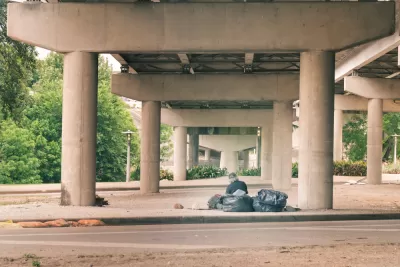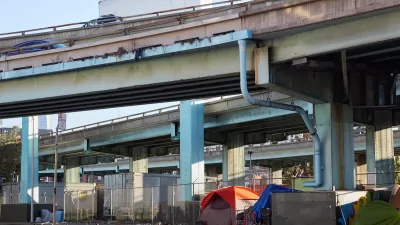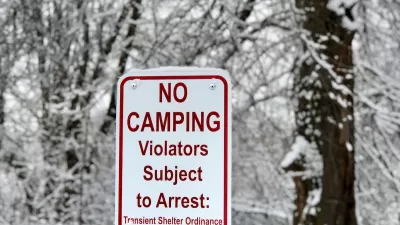Taking a comprehensive ‘Housing First’ approach, the city of Houston has cut homelessness by 63 percent in the last decade.

“During the last decade, Houston, the nation’s fourth most populous city, has moved more than 25,000 homeless people directly into apartments and houses. The overwhelming majority of them have remained housed after two years,” reports Michael Kimmelman in an expansive piece in The New York Times. “The number of people deemed homeless in the Houston region has been cut by 63 percent since 2011, according to the latest numbers from local officials.”
Houston has gotten this far by teaming with county agencies and persuading scores of local service providers, corporations and charitable nonprofits — organizations that often bicker and compete with one another — to row in unison. Together, they’ve gone all in on ‘housing first,’ a practice, supported by decades of research, that moves the most vulnerable people straight from the streets into apartments, not into shelters, and without first requiring them to wean themselves off drugs or complete a 12-step program or find God or a job.
The article details Houston’s efforts and highlights the city’s focus on eliminating “chronic homelessness,” a term referring to people who experience homelessness repeatedly or for longer than a year.
According to Kimmelman, “the big reveal after a year was not that Houston had solved the problem. It hasn’t. There is no one-time fix to homelessness.” For Kimmelman, “The reveal was something different. It was that in broken America it’s still possible for adversaries to share facts and come together around something contentious and difficult. Public and private, county and city, businesses and nonprofits, conservatives and liberals, the housed and unhoused: In Houston, enough of them have agreed on a goal that seems worth striving for.”
FULL STORY: How Houston Moved 25,000 People From the Streets Into Homes of Their Own

Trump Administration Could Effectively End Housing Voucher Program
Federal officials are eyeing major cuts to the Section 8 program that helps millions of low-income households pay rent.

Planetizen Federal Action Tracker
A weekly monitor of how Trump’s orders and actions are impacting planners and planning in America.

Ken Jennings Launches Transit Web Series
The Jeopardy champ wants you to ride public transit.

Rebuilding Smarter: How LA County Is Guiding Fire-Ravaged Communities Toward Resilience
Los Angeles County is leading a coordinated effort to help fire-impacted communities rebuild with resilience by providing recovery resources, promoting fire-wise design, and aligning reconstruction with broader sustainability and climate goals.

When Borders Blur: Regional Collaboration in Action
As regional challenges outgrow city boundaries, “When Borders Blur” explores how cross-jurisdictional collaboration can drive smarter, more resilient urban planning, sharing real-world lessons from thriving partnerships across North America.

Philadelphia Is Expanding its Network of Roundabouts
Roundabouts are widely shown to decrease traffic speed, reduce congestion, and improve efficiency.
Urban Design for Planners 1: Software Tools
This six-course series explores essential urban design concepts using open source software and equips planners with the tools they need to participate fully in the urban design process.
Planning for Universal Design
Learn the tools for implementing Universal Design in planning regulations.
Ada County Highway District
Clanton & Associates, Inc.
Jessamine County Fiscal Court
Institute for Housing and Urban Development Studies (IHS)
City of Grandview
Harvard GSD Executive Education
Toledo-Lucas County Plan Commissions
Salt Lake City
NYU Wagner Graduate School of Public Service





























